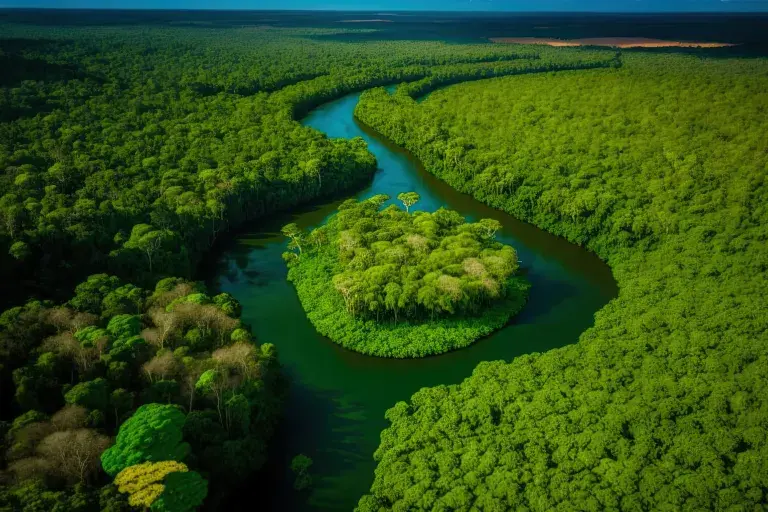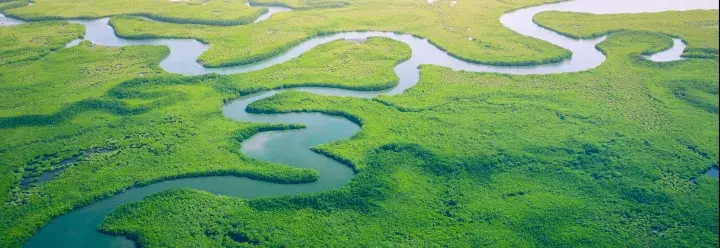Collaboration is key to deliver on nature and biodiversity goals
The Global Biodiversity Framework, coming out of the CBD COP15 in December last year, has energised actions and commitments to scale up conservation and nature positive solutions around the world.
With ambitious targets to conserve, manage, and restore 30 percent of the world’s lands, inland waters, and coastal and marine ecosystems, it will take concerted and coordinated efforts from stakeholders across the spectrum to deliver the scale of progress required.
ISEAL and our membership have long recognised that complex sustainability issues require holistic, collaborative solutions. Conserving or restoring healthy ecosystems is not going to be achieved on a farm by farm or enterprise by enterprise basis. Nor is this work the responsibility of individual companies or local government; it requires key stakeholders in a landscape to come together with those who source from that landscape to support a plan that achieves a holistic vision.
Corporate responsibility is evolving
The starting point for a responsible company is to take care of its workers and the communities in which it operates. Sourcing responsibly through supply chains has been part of that ethic and sustainability standards and certification have been integral in delivering the actions and assurance companies need to act responsibly. As we come to understand the scale and complexity of solutions that address priority sustainability challenges, companies are recognising that their responsibility extends beyond the supply chain to the landscapes from which they source or to the landscapes where threats to issues like nature and biodiversity are greatest.
In practice, this broadening definition of responsibility translates into companies investing in nature-based solutions to meet their commitments or recognising the importance of just transitions in empowering local communities to adapt and become more resilient in light of climate impacts and pressures on livelihoods. More resilient sourcing landscapes, the potential for biodiversity credits or offsets, and the ability to communicate about these actions are all incentives for companies to be first movers on nature and biodiversity. And one of the first steps a company can take is to understand the nature equivalent footprint of its operations and supply chain activities to get a sense of scale for the broader actions it aims to take.
Collaborative landscape-scale solutions
The consultation this month on the first draft of the Land targets for the Science-based Targets for Nature (SBTN) is timely. While still nascent and in need of testing, elaboration and refinement, the idea that we can establish company-level targets for nature conservation and restoration, much like company carbon accounting, is powerful. A core tenet of the idea of targets for nature is that we need those holistic, collaborative landscape-scale solutions to deliver improved ecological integrity. And that is where ISEAL comes in.
ISEAL has been working closely with many of the leading landscape and jurisdictional initiatives globally for the last three years to facilitate discussion and alignment on what good practice looks like for these landscape approaches and for effective company engagement in those initiatives. This work brings together a range of ISEAL Community Members including Roundtable for Sustainable Palm Oil, Better Cotton, Rainforest Alliance, and other sustainability systems committed to expanding the scope of their systems to apply at landscape-scales, with state-level jurisdictional initiatives like the Produce, Conserve, Include (PCI) initiative in Mato Grosso, Brazil, and with measurement and reporting frameworks like LandScale, SourceUp, and CDP.
Sharing experience to align on solutions
ISEAL’s focus has been on aligning practitioners on what is needed for these landscape initiatives to be successful and for companies to engage effectively with them. The results of this work have been a series of guidance documents and, most recently, shared papers on how companies can invest in landscape actions and make claims about progress in implementing those actions. We will build positions later this year that unpick the complex issues of company roles in measuring performance improvements in the landscape, and how companies can credibly claim that their actions contributed to those improvements.
These are challenging issues and all of the participating initiatives are committed to sharing their experience and learning to help figure out how best to support effective landscape action. It is only through this collaborative learning that we can collectively innovate and find solutions that work in practice. Company partners are integral to this collaboration. The Forest Positive Coalitions of the Consumer Goods Forum, as well as companies from the Association for Sustainable Derivatives and the CDP Landscapes working group are providing feedback on draft positions to ensure they can be applied by companies.
ISEAL and its membership are developing effective solutions to help address today’s most significant sustainability challenges. ISEAL’s ability to convene practitioner communities and deliver aligned positions reflects the importance of these issues and the broad commitment to finding solutions. Through its neutral convening role, ISEAL can bring its expertise in good practices to this critical area of work around landscape action, measurement and claims, helping to deliver workable solutions for nature and biodiversity.
Read our newly released joint position paper on how companies can make claims about their landscape investments and actions, developed and supported by 18 of our partner organisations.


